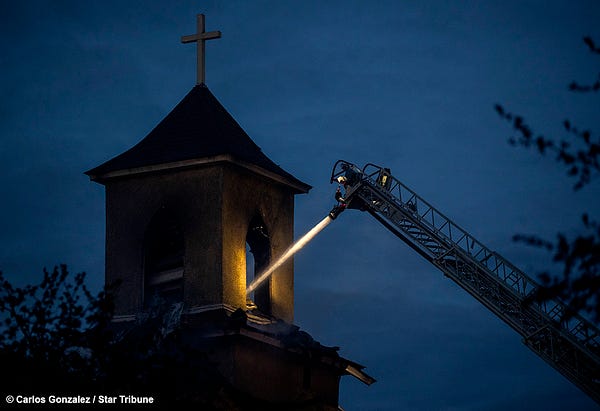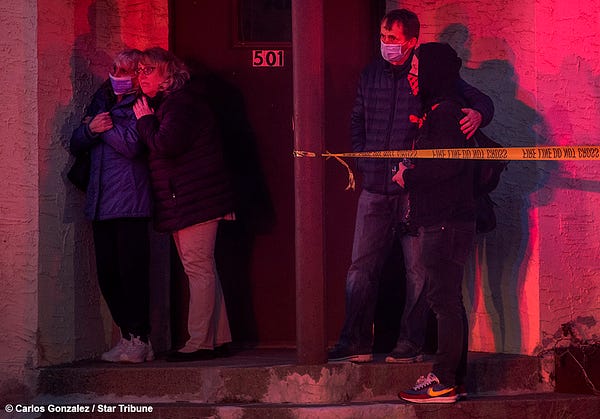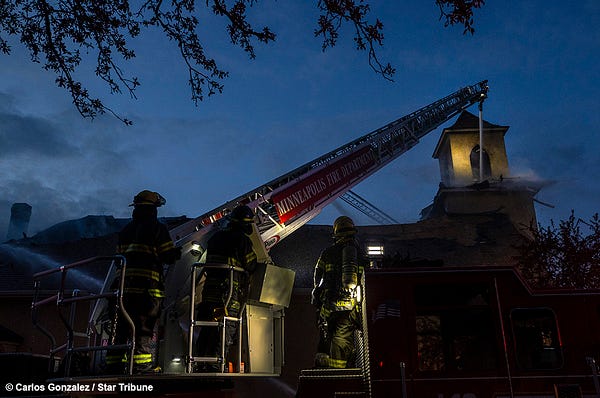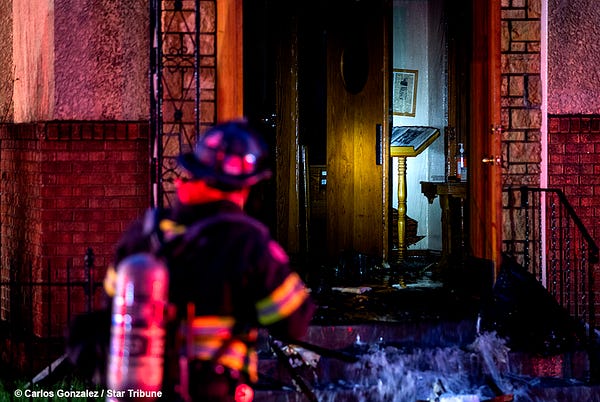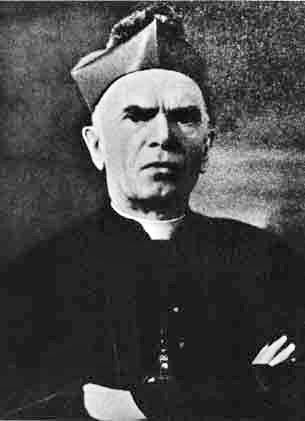Sacred Heart of Jesus Polish National Catholic Church caught fire Monday night in Minneapolis. By the time firefighters had contained the blaze, the roof had collapsed and the church had suffered extensive, probably irrecoverable, damage.

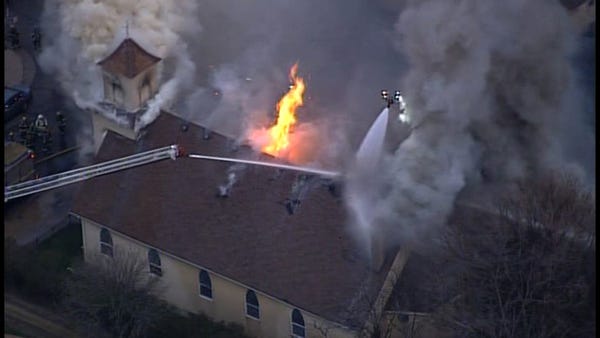
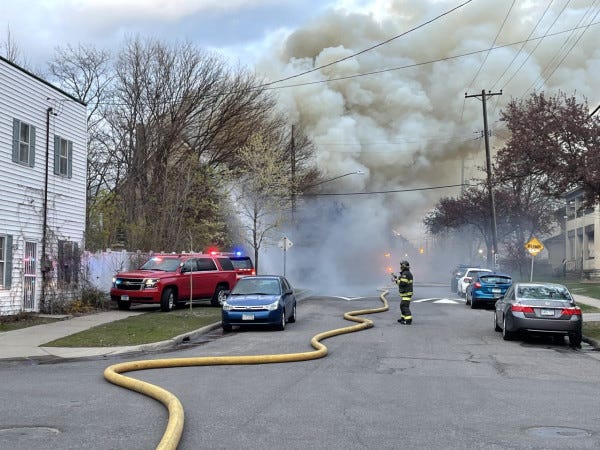
The fire began as Minneapolis is on edge, after jurors started deliberating in the Derek Chauvin murder trial. While arson investigators have reportedly been dispatched to the scene, there have been no statements on what caused the fire.
The church belonged to a group called the Polish National Catholic Church. Never heard of it? You’re not alone.
But since you might have questions in the days to come, here’s a bit of an explainer:
What is the Polish National Catholic Church? And answer in a nutshell, please.
In the late 1800s, the Catholic Church in the U.S. was mostly composed of ethnic immigrant communities, many of whom built their own churches, and often supplied priests from their home countries to minister to them.
Polish immigrants in some cities — Scranton, Pennsylvania among them — felt they were getting short shrift from the German and Irish bishops who led East Coast dioceses. Some complained that the Polish language wasn’t being allowed in parish schools. Others that priests from Poland were treated poorly.
Some Polish communities got into disputes with their bishops over who had the right to manage and administer parish property — the pastor appointed by the bishop, or the people who built the Church.
In fact, that phenomenon, called “lay trusteeism,” was a point of contention for a lot of U.S. Catholics in the nineteenth century — and still has consequences for the Church today.
In 1897, under the leadership of a priest named Fr. Franciszek Hodur, a group of Polish Catholics in Scranton founded their own parish. The group believed that parish property should be administered democratically by members, rather than by the parish pastor. They governed their church that way, and considered it independent from the jurisdiction of the local bishop.
Other communities in other dioceses followed suit, calling for democratic elections of parish administrators — even as bishops issued excommunications.
In 1904, delegates from those congregations gathered in Scranton, and decided to form an umbrella organization called the Polish National Catholic Church. They elected Hodur the group’s bishop.
The priest found bishops in Europe who had broken away from the Catholic Church after the First Vatican Council — they called themselves “Old Catholics” — and in 1907 Hodur was consecrated, validly but illicitly, a bishop.
The Polish National Catholic Church was subsequently declared to be in schism.
Today it has about 25,000 members in the U.S. and Canada. It mostly holds to the doctrine of the Catholic Church, except for the doctrines about papal infallibility and primacy taught in the First Vatican Council, the dogmatic declaration of the Immaculate Conception, and a few other differences.
TL;DR: The PNCC is an American group that broke from the Catholic Church in the early 1900s, and still continues today. Its emphasis is on democratic leadership and administration of churches, especially at the parish level. It does not recognize the authority of the pope over the Church.
So the PNCC is not in full communion with the Catholic Church, then?
No. But they’re apparently working at it. The USCCB and the PNCC have issued several statements of mutual understanding, and have been engaged in dialogue, seemingly aimed towards reconciliation, for decades.
Does the PNCC have valid orders?
Yes. The Catholic Church recognizes the validity of orders and the other sacraments of the PNCC, which means in part that the Catholic Church recognizes limited jurisdictional authority of PNCC hierarchs as well.
Does the PNCC have married priests?
Yes, and married bishops too.
Can I go to Mass at a PNCC church?
The Church says that if it is physically or morally impossible for a Catholic to approach a priest in full communion with the Church, a Catholic may receive the sacraments of Eucharist, penance, and anointing of the sick from a priest of the PNCC.
Under ordinary circumstances, however, Catholics “receive [sacraments] licitly from Catholic ministers alone.”
Catholic priests may administer those sacraments to PNCC members “if they seek such on their own accord and are properly disposed,” canon law explains.
And if someone is in immediate danger of death, they can receive sacraments from a PNCC priest with no hesitation at all.
So, valid but not licit?
In a nutshell, yeah. And in a formal state of schism.
How many PNCC churches are there?
There are four PNCC dioceses in the US and one in Canada. There are about 120 congregations in those communities, and about 25,000 members.


